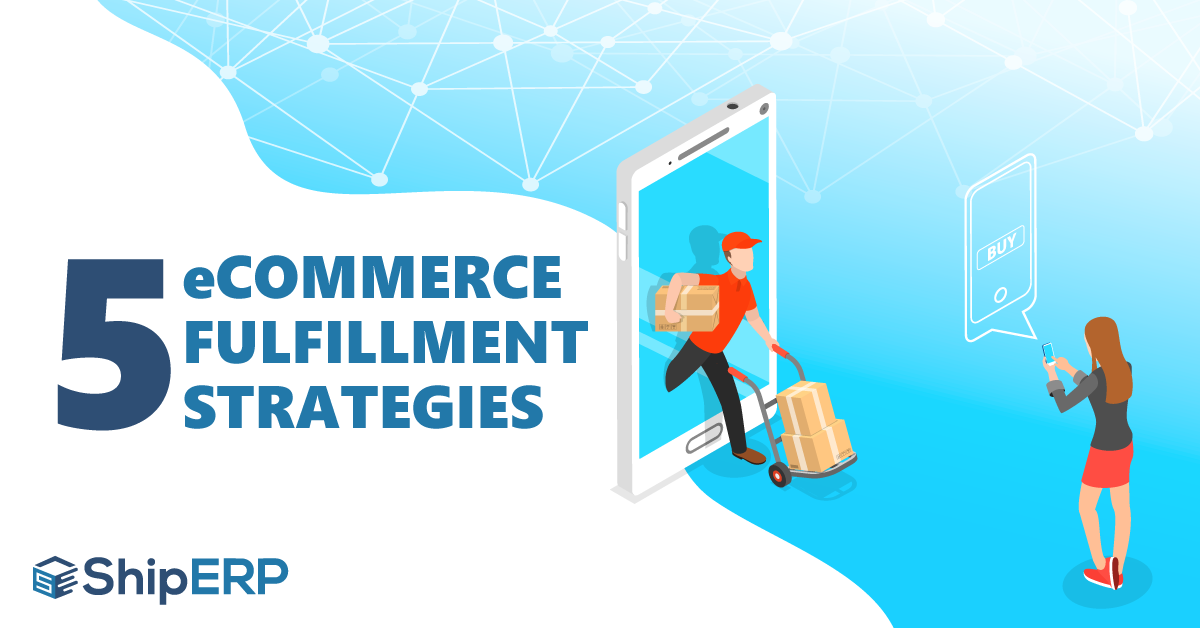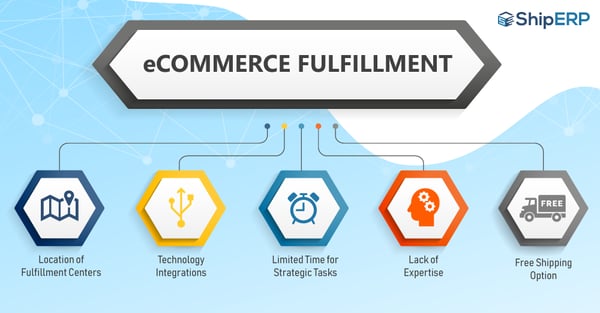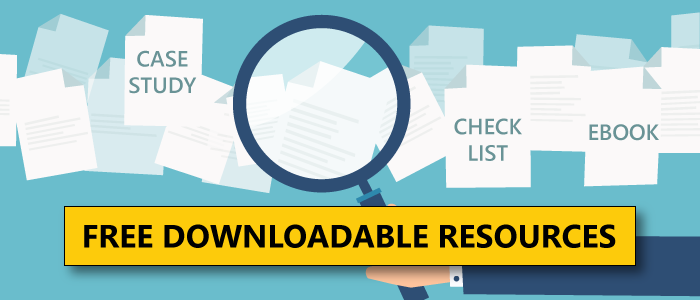
Empower Your eCommerce Fulfillment Strategy
Stay at the forefront of customers’ expectations with smart and reliable eCommerce fulfillment strategies, such as software integrations and free two-day shipping. Read on for tips on how to run a successful eCommerce fulfillment process.
A crucial part of your success in online retail is eCommerce fulfillment, which is the behind-the-scenes process of delivering orders to customers after they order it online. This process can include storing inventory, picking and packing products, and shipping orders to the customers. While the focus of your business might not be on eCommerce order fulfillment, it is a process that directly impacts the organization’s bottom line.
Because of retail giants and Amazon Prime that offer free two-day shipping, consumer expectations are rising for online merchants. Customers want fast, convenient, and free delivery. For sellers, it’s easier said than done to fulfill those wishes.
According to a 2018 consumer study, 54 percent of shoppers abandoned their online shopping carts because of delivery costs. When it comes to order fulfillment, free delivery is the most important factor for 83 percent of shoppers. In the same study, 24 percent of shoppers cancelled their orders because of slow delivery speed.
As you can see, online retailers run the risk of losing customers if their delivery fulfillment service doesn’t meet expectations. So, what can you do now?
Before knowing what eCommerce fulfillment service to use for your business, let’s look at some factors that affect your fulfillment strategy and planning.

Five eCommerce Fulfillment Strategy Factors
Good planning will foster success and grow your business. Consider these important points as you hone down on your eCommerce fulfillment strategy for your organization.
Location of Fulfillment Centers
Even if your business does not have a brick-and-mortar store, physical location is still important for order fulfillment. In other words, it’s where you fulfill customer orders. Since affordable and fast delivery options are important factors for consumers, it’s vital to have fulfillment centers physically near your customers.
Reduce shipping costs and speeds with urban fulfillment centers or distributing inventory across multiple locations.
Technology Integrations
Leverage software integrations with your eCommerce platform and/or online marketplace to efficiently manage orders across all channels. This can avoid data entry errors like manual uploads and duplicates. Along with that, the order fulfillment process would be optimized as the fulfillment staff would be notified to pick and package orders as soon as the order is placed.
Limited Time for Strategic Tasks
Manually packing and shipping orders to customers can take a large chunk of your time in a day. Lost time that could be spent on growth-oriented tasks such as strengthening relationships with customers, creating new products, and marketing to potential customers.
Consider integrating an eCommerce fulfillment service to focus on improving your business to generate more revenue and scale your organization up.
Lack of Self-Fulfillment Expertise
Many early-stage eCommerce businesses don’t focus on supply chain management and/or order fulfillment process as core elements. With many moving parts to fulfillment and shipping, it’s overwhelming to understand it all.
Be prepared for a slow learning curve on fulfillment if you’re just starting out. You can consider using eCommerce fulfillment services later as your business expands.
Free Two-Day Shipping
Consider offering your potential customers free shipping to reduce cart abandonment rates. For the online merchant, shipping is expensive and most definitely, not free. While one strategy might not work for all, it is possible for your business to offer free shipping without hurting your margins.
Here are some potential ways to save shipping time:
- Factor in the cost of shipping into the product price
- Require a minimum spending amount to qualify for free shipping
Three Models of eCommerce Fulfillment Services
The factors above will help you decide on which method of eCommerce order fulfillment will best suit your business needs. These are the three most common order fulfillment models for eCommerce businesses:
- In-House Order Fulfillment: The merchant handles all steps of the fulfillment process manually. Although it can be time consuming, this method offers 100 percent control of inventory and the pick, pack, and ship process. The self-fulfillment method is low cost for small businesses.
- Dropshipping: The merchant never holds onto the products being sold. When a customer places an order, it is forwarded to the manufacturer. Often overseas, the manufacturer produces, packs, and ships the product to the customer which can take a long time at higher costs. This enables the merchant to focus on other business priorities with the cost of lower quality control and reduced brand power.
- Third-Party Logistics (3PL): Like dropshipping, the merchant hands off the order fulfillment process to a third-party company. Quality control may be out of the merchant’s hands, but the 3PL company handles all the fulfillment process, including receiving inventory from manufacturer to restocking returned products. Partnering with a 3PL means that the merchant doesn’t have to create a whole distribution infrastructure. Each 3PL is different, so make sure to do your due diligence at researching which 3PL fits your needs.
The best eCommerce fulfillment service will help run your online business seamlessly, whether that be self-fulfillment or with a 3PL. Inefficient eCommerce fulfillment will only slow down your company’s growth. Poor shipping and delivery process can lead to dissatisfied customers and bad reviews.
To meet consumer demands, you must understand the eCommerce order fulfillment process, the best-matched fulfillment model for your business, and how to be strategic in the execution. There’s no easy answer as to what your business needs or can do, but there is one thing all online merchants can do is to be transparent. At the minimum, relieve your customers’ frustrations with estimated time of delivery at the end of their shopping journey with you.
We provide ShipERP, a fully integrated SAP multi-carrier shipping solution, for all your eCommerce fulfillment needs. ShipERP provides businesses with efficiencies that come with a strong return on investment.


